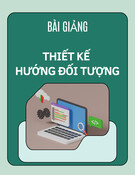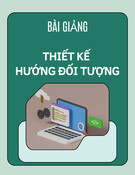
DONG NAI UNIVERSITY OF TECHNOLOGY
1
5. Webservice .Net
4. Android Services
3. Broadcast Receiver
2. Intent filter
1. Multi - Threading

DONG NAI UNIVERSITY OF TECHNOLOGY
2
1. Multi - Threading
1.1 Introduction
1.2 Handler class
1.3 AsyncTask class

DONG NAI UNIVERSITY OF TECHNOLOGY
3
1.1 Introduction
Threads
Android’s threads run in a manner similar to common
Java threads
A Thread is a concurrent unit of execution.
not executing in order
has its own call stack for methods being invoked, their
arguments and local variables.
Each virtual machine instance has at least one main
Thread running when it is started;
The application might decide to launch additional Threads
for specific purposes.

DONG NAI UNIVERSITY OF TECHNOLOGY
4
1.1 Introduction
Multi- Threading

DONG NAI UNIVERSITY OF TECHNOLOGY
5
1.1 Introduction
Multi- Threading
Threads in the same VM interact and synchronize by the
use of shared objects and monitors associated with
these objects.
There are basically two main ways of having a Thread
execute application code.
1.Create a new class that extends Thread and override its
run() method.
2.Create a new Thread instance passing to it a Runnable
object.
In both cases, the start() method must be called to
actually execute the new Thread.







![Bài giảng Lập trình di động [Mới nhất]](https://cdn.tailieu.vn/images/document/thumbnail/2025/20250506/vinarutobi/135x160/2781746530006.jpg)








![Tài liệu ôn tập môn Lập trình web 1 [mới nhất/chuẩn nhất]](https://cdn.tailieu.vn/images/document/thumbnail/2025/20251208/hongqua8@gmail.com/135x160/8251765185573.jpg)









